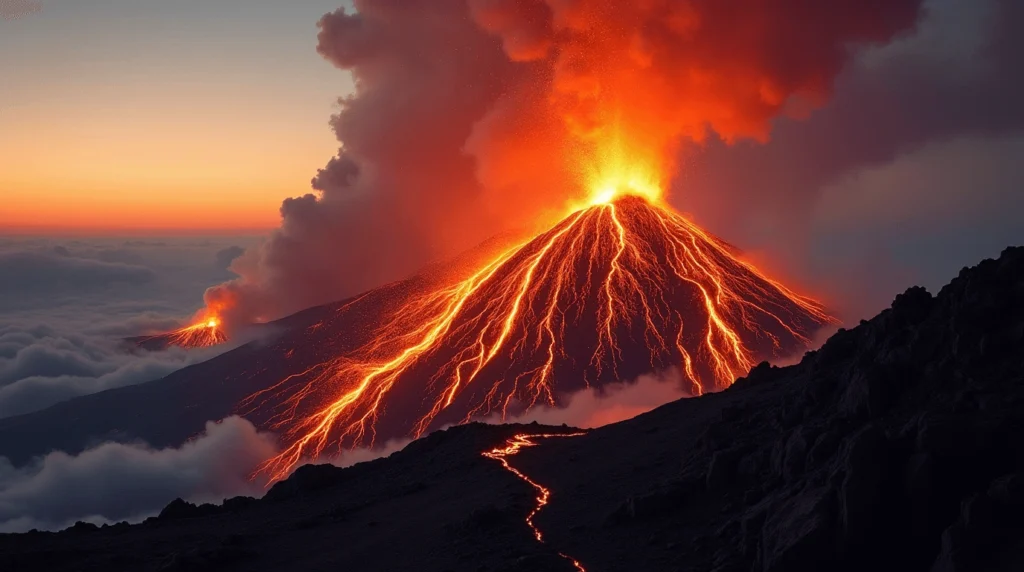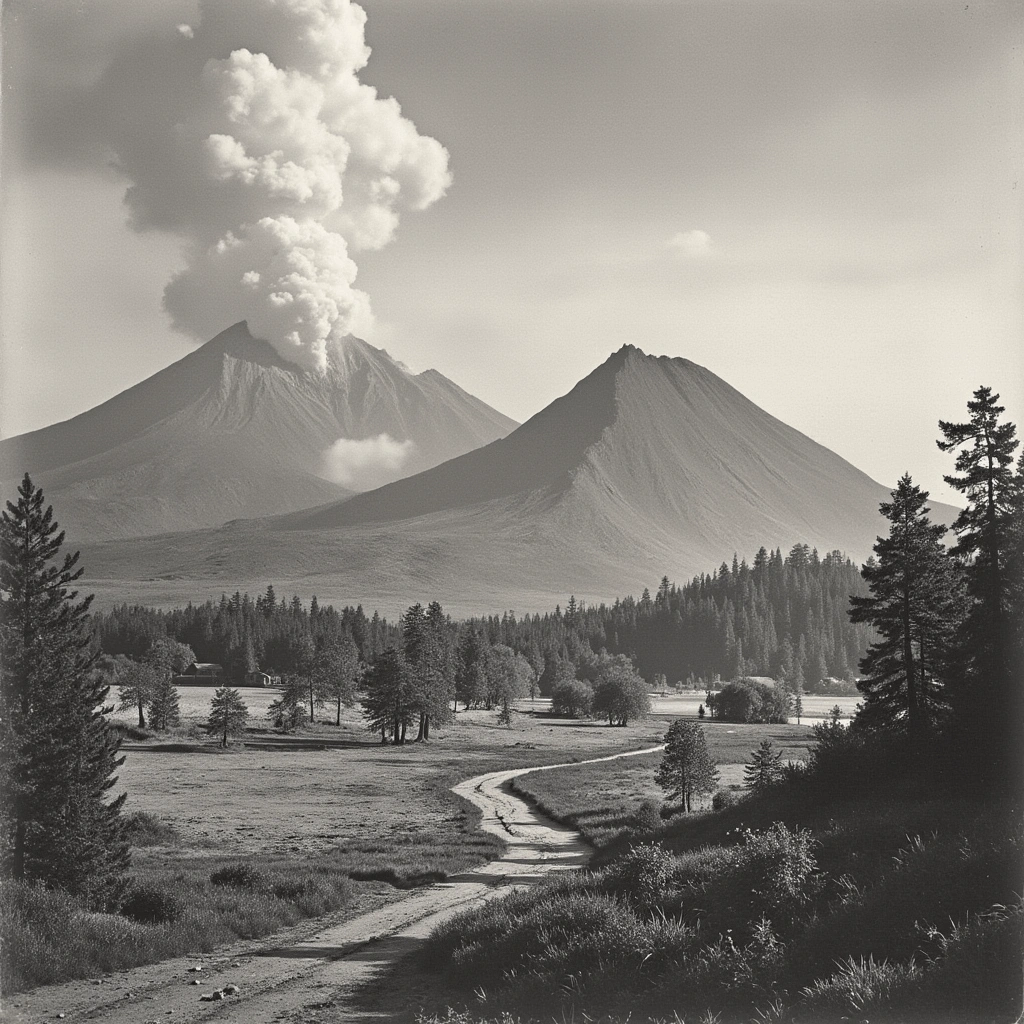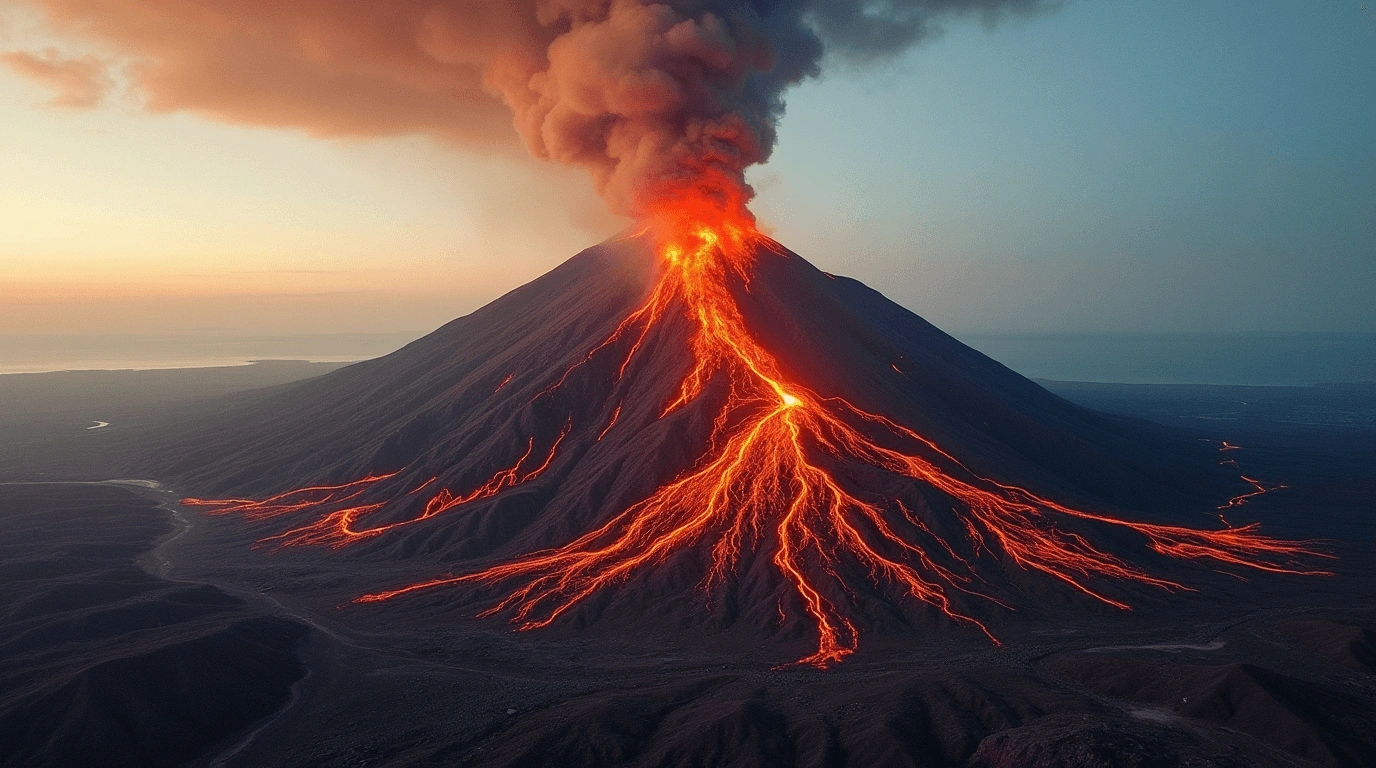When most people think of new jersey volcano, volcanoes rarely come to mind. Yet tucked away in the northwestern corner of the Garden State lies a geological wonder with a fascinating story to tell. The Beemerville Volcano, more accurately known as the Beemerville Alkaline Complex, represents one of New Jersey’s most intriguing geological features – an ancient volcanic formation dating back hundreds of millions of years.
This comprehensive guide explores everything you need to know about new jersey volcano: its precise location, geological history, unique composition, current status, and much more. Whether you’re a geology enthusiast, a curious local, or someone who just discovered new jersey volcano, this article will provide you with authoritative insights into this remarkable feature of the state’s landscape.
Table of Contents
What Exactly Is the Beemerville Volcano?
The Beemerville Volcano is not your typical cone-shaped volcano like Mount Fuji or Mount St. Helens. Instead, it’s technically an alkaline intrusive complex – a formation created when magma pushed upward through the earth’s crust but never fully erupted at the surface. Geologists refer to it as the “Beemerville Alkaline Complex” to more accurately describe its geological nature.

This ancient volcanic structure formed approximately 440 million years ago during the Ordovician period, making it significantly older than most of North America’s more famous volcanoes. Unlike active volcanoes that display visible cones or craters, the Beemerville Complex has been worn down by millions of years of erosion, leaving behind distinctive rock formations and minerals that tell the story of its volcanic origins.
For a deeper understanding of volcanic formations and their classifications, visit the U.S. Geological Survey (USGS) website.
Where Exactly Is the New Jersey Volcano?
The Beemerville Volcano is located in Sussex County in northwestern new jersey volcano, specifically in Wantage Township near the small community of Beemerville. Its exact location is approximately 7 miles northeast of the Sussex Borough and about 3 miles southeast of High Point State Park, new jersey volcano highest elevation point.
The volcanic complex covers an area of roughly 2 square miles and consists of several distinct intrusions. For those seeking precise coordinates, the center of the complex is located at approximately 41°15′N 74°40′W.
It’s important to note that there is no dramatic volcanic cone to observe. The complex appears as a series of distinctive rock outcroppings and subtle topographical features across the landscape rather than a single prominent mountain. Many visitors are surprised to learn that the rolling hills and farmland they’re looking at were once the site of significant volcanic activity.
For more on geological mapping and regional features, check out the New Jersey Geological and Water Survey.
Is the Beemerville Volcano Still Active?
No, the New Jersey volcano is not active. The Beemerville Volcano is classified as extinct, meaning it has not erupted for a very long time and will never erupt again. The geological processes that formed this volcanic complex ceased approximately 440 million years ago when the tectonic setting of the region was completely different than it is today.
The volcanic activity that created the Beemerville Complex occurred during the closing of the ancient Iapetus Ocean (a predecessor to the Atlantic Ocean) when what is now North America was colliding with other continental landmasses. This process, part of the Taconic Orogeny (mountain-building event), created conditions for volcanic activity that no longer exist in the region. For an in-depth look at extinct volcanoes and plate tectonics, visit the Smithsonian Institution’s Global Volcanism Program.
Today, new jersey volcano sits firmly within the North American Plate, far from any active plate boundaries where volcanism typically occurs. The state’s current geological setting makes future volcanic activity virtually impossible.
The Geological History of Beemerville Volcano
The story of new jersey volcano begins roughly 440 million years ago during the Ordovician period. At this time, what would eventually become North America looked drastically different. The region that is now the eastern United States was experiencing the effects of the Taconic Orogeny, a mountain-building event resulting from the collision of tectonic plates as the ancient Iapetus Ocean was closing.

During this period of intense geological activity, magma from deep within the Earth forced its way upward through existing rock layers. This magma had an unusual alkaline composition, rich in elements like sodium and potassium but relatively poor in silica. The distinctive chemistry explains why the Beemerville Complex contains minerals rarely found elsewhere in the region. To learn more about the Ordovician period and its geological significance, visit the University of California Museum of Paleontology.
Unlike explosive volcanoes that violently erupt, the Beemerville formation likely developed through a slower process of magma intrusion. Over time, multiple pulses of magma created several distinct intrusive bodies within what we now call the Beemerville Alkaline Complex.
After the volcanic activity ceased, hundreds of millions of years of erosion stripped away the overlying rock, gradually exposing the more resistant igneous intrusions we can study today. The complex has been further shaped by multiple ice ages, including the most recent glaciation that ended approximately 10,000 years ago.
Unique Mineralogy of the Beemerville Complex
One of the most fascinating aspects of the Beemerville Volcano is its unusual rock and mineral composition. The complex is primarily composed of nepheline syenite, a relatively rare igneous rock type that forms in alkaline conditions low in silica. This unique chemistry has created a mineralogical wonderland for geologists.
Some of the notable minerals found within the Beemerville Complex include:
| Mineral | Description | Significance |
|---|---|---|
| Nepheline | A feldspathoid mineral rich in sodium and potassium | Indicates low-silica, alkaline magma conditions |
| Aegirine | A sodium-rich pyroxene mineral | Common in alkaline igneous rocks |
| Titanite | A calcium titanium silicate | Often found as accessory minerals in syenites |
| Zircon | Zirconium silicate | Used for radiometric dating of the complex |
| Cancrinite | A complex sodium calcium carbonate aluminosilicate | Indicates unusual chemical conditions during formation |

For those interested in mineralogy, visit the Mineralogical Society of America.
While not directly connected to the Franklin and Sterling Hill mining districts famous for their fluorescent minerals, the Beemerville Complex represents another example of new jersey volcano surprisingly diverse geological heritage and unusual mineral wealth.
Discovery and Scientific Research
The unusual rocks of the Beemerville area likely puzzled early settlers, but formal geological study of the complex began in the late 19th century. In 1898, J.E. Wolff and A.H. Brooks published one of the first detailed scientific descriptions of the area’s unique geology in a U.S. Geological Survey bulletin.
Since then, numerous geologists have studied the Beemerville Complex, gradually building our understanding of its age, composition, and formation. Modern techniques including radiometric dating have helped establish the precise age of the intrusions, while advanced mineralogical analysis has revealed the complex’s unique chemical composition.
Recent research continues to refine our understanding of how the Beemerville Complex relates to other igneous intrusions along the eastern margin of North America and what it reveals about the region’s tectonic history during the Ordovician period.
Can You Visit the Beemerville Volcano?
Visiting the Beemerville Volcano presents some challenges as much of the complex lies on private property, and there are no developed public facilities specifically for viewing the volcanic features. Additionally, unlike more recent volcanoes, there’s no dramatic cone or crater to observe – millions of years of erosion have obscured many of the obvious volcanic features.
However, geology enthusiasts can still appreciate aspects of the region’s unique geology through these options:
High Point State Park: Located just a few miles from the Beemerville Complex, this park offers hiking trails and panoramic views of the region shaped by ancient geological forces.
Roadside Observations: Some outcroppings of the distinctive nepheline syenite rocks can be glimpsed from public roads in the Beemerville area, though please respect private property boundaries.
Guided Field Trips: Occasionally, organizations like the new jersey volcano Geological Survey or local universities organize field trips to geologically significant sites in the region.
Rock and Mineral Collections: Samples from the Beemerville Complex can be viewed in collections at various museums, including the New Jersey State Museum in Trenton and the Franklin Mineral Museum in Franklin, NJ.
For those seriously interested in the geology of the Beemerville Volcano, consulting geological maps and guides published by the new jersey volcano Geological Survey can provide valuable information for self-guided exploration of the area’s publicly accessible portions.
new jersey volcano and Recent Earthquake Activity: Is There a Connection?
No, the Beemerville Volcano has no connection to recent earthquake activity in new jersey volcano. The volcanic complex has been extinct for approximately 440 million years, and its formation occurred under completely different tectonic conditions than those present today.
Modern earthquakes in new jersey volcano are typically related to residual stress within the North American Plate rather than active volcanism or major plate boundary activity. The region occasionally experiences minor seismic events, but these are not indicators of volcanic activity and pose no risk of reawakening the long-extinct Beemerville Volcano.
The presence of an ancient volcanic complex and occasional minor earthquakes are simply different chapters in New Jersey’s long and complex geological history.
Frequently Asked Questions About New Jersey’s Volcano
Can the NJ volcano erupt again?
No, the Beemerville Volcano is completely extinct and will never erupt again. The geological conditions that created it no longer exist in the region, and the magma chambers that once fed it have long since solidified.
How old is the Beemerville Volcano?
The Beemerville Volcanic Complex formed approximately 440 million years ago during the Ordovician period.
What county is the NJ volcano in?
The Beemerville Volcano is located in Sussex County, New Jersey.
Is the Beemerville volcano related to the NJ earthquakes?
No, recent earthquakes in new jersey volcano have no connection to the ancient Beemerville Volcano. They are caused by entirely different geological processes.
Are there any other volcanoes in New Jersey?
No, recent earthquakes in new jersey volcano have no connection to the ancient Beemerville Volcano. They are caused by entirely different geological processes.
Can you see a volcanic cone at Beemerville?
No, erosion over hundreds of millions of years has removed any typical volcanic cone structure that might have existed. The complex is visible mainly as distinctive rock formations and subtle topographical features.
Why the Beemerville Volcano Matters
Despite being extinct for hundreds of millions of years, the Beemerville Volcano provides valuable insights into North America’s geological history. It represents a window into the ancient past when the eastern margin of North America was an active zone of mountain building and volcanic activity.
For geologists, the complex offers rare examples of alkaline igneous rocks and unusual minerals that formed under specific conditions. For the average new jersey volcano resident, it serves as a reminder that even the seemingly stable landscape around us has undergone dramatic transformations over geological time.
The next time you drive through Sussex County’s rolling hills and farmland, remember that you’re passing over what was once a region of intense volcanic activity – a hidden chapter in new jersey volcano rich geological story.
Conclusion
The Beemerville Volcano stands as one of new jersey volcano most fascinating geological features – a testament to the state’s surprisingly dynamic geological history. Though extinct for hundreds of millions of years and lacking the dramatic appearance of younger volcanoes, this ancient volcanic complex continues to intrigue scientists and curious visitors alike.
From its formation during the tumultuous closing of an ancient ocean to its unique mineralogical composition, the Beemerville Alkaline Complex offers a glimpse into Earth’s distant past. While you won’t see any lava flows or smoking craters in northwestern new jersey volcano today, understanding the presence of this ancient volcano adds a new dimension to appreciation of the Garden State’s natural heritage.
For those interested in learning more about New Jersey’s geological wonders, including its ancient volcano, resources from the new jersey volcano Geological Survey and local universities offer detailed information about the state’s remarkable geological diversity.


